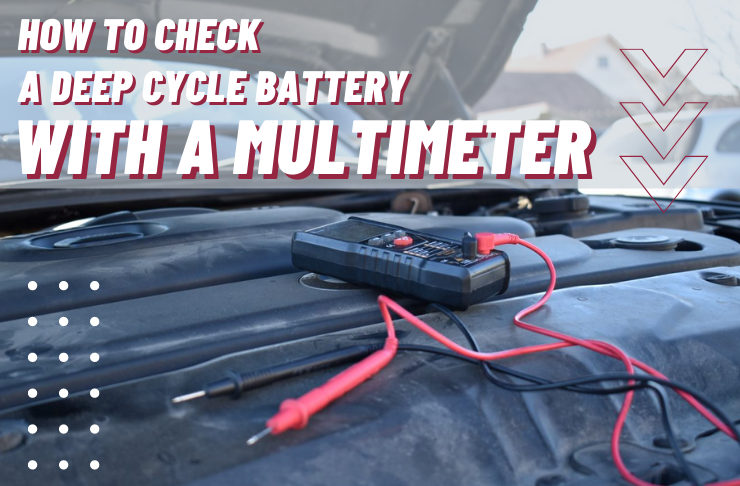
Deep cycle batteries are used to provide constant current unlike starting batteries that provide a burst of current.
Because they provide a constant and low current supply throughout, therefore they are used for running electric appliances and some vehicles like jeep wrangler. This simply means that they are regularly used for a long duration of time every day.
Hence, for such batteries that are used very extensively, testing on a regular basis (maybe once in a month or two) is very important.
You must have heard about “testing a deep cycle battery“. When you test a battery, you get to know whether your battery is capable enough to be compared with a brand-new battery or not.
In other words, it lets you know if something’s going wrong with your battery that is deteriorating its functioning. Testing a battery also becomes essential when someone actually starts having issues with their battery.
Testing can be done through a voltmeter, ammeter, hydrometer, and load-tester. But, do you know that one of the most satisfying battery tests can be done through a multimeter?
In this article, we will tell you how to check a deep-cycle battery with a multimeter. And for our reader’s convenience, we have divided all the information into 4 simple steps.
Steps to Test a Deep Cycle Battery With a Multimeter?
First, check out this instructional video on how to use a multimeter on 12V batteries:
Step 1: Charging the Battery
In order to find out the best results, the battery should be charged to its maximum potential so that you can check the highest voltage that your battery can deliver.
Always charge your battery according to its nature. If you have got an AGM battery, go for an AGM battery charger. If you have got a gel battery, charge it with a gel battery charger.
Never ever use inappropriate chargers for charging your deep cycle battery because it may harm the battery in several ways.
Also, do not use a trickle charger because it keeps on charging the battery even after it’s fully charged and you must be knowing that overcharging is also harmful to a deep-cycle battery.
Besides, it is best to use an automatic battery charger, as it turns off automatically once the battery is fully charged. Hence, it prevents overcharging.
Step 2: Stabilize the Voltage
Once you have charged the battery to its maximum. Now you have to stabilize the voltage to its normal.
A fully charged deep cycle battery may show a very higher value for the voltage which will not give you accurate results.
In order to do so, you have to use the battery for 5-10 minutes. Do not overuse it as it will drain the battery and hence lower its voltage value.
Once the battery is used for a few minutes, the high amount of current and the voltage stabilizes in the cells of the battery.
Step 3: Connect the Multimeter
You can buy a multimeter from any battery store or you can borrow it from someone if you don’t feel like putting extra money into it.
Now, when you have got the multimeter in your hands, you will notice two different cords/wires.
One with red in color and the other one with black in color. Now do not get confused. The red color needs to be connected with the positive terminal of the battery and the black color with the negative terminal of the battery.
If you will connect the multimeter to the wrong polarity then you may not get any results.
You shall be connecting it in the right manner.
There are no prongs used in a multimeter as used in a voltmeter.
A multimeter only has wire ends and when it comes in contact with the right terminal, it shows the reading.
Step 4: Compare the Readings
Turn on the battery and the multimeter. Once you place the wires onto the battery terminals you shall notice the movement of the multimeter needle.
You have to connect the multimeter at least 5 times and take 5 readings for the voltage. Now take out the average of all 5.
A healthy deep-cycle battery with a rating of 12V shows a multimeter reading of more than 12.4V and a 6-volt battery will at least get a reading of 6.2V.
Compare your average results with these values
If you aren’t getting such readings you shall replace your battery with a new one.
Final Words
It is very simple to use a multimeter for testing a battery and it’s also easy to set up the multimeter. It only takes a few minutes to take readings with a multimeter so you can use it anytime and anywhere.
Using a multimeter is one of the best ways for testing a deep-cycle battery. We hope that you find these steps easy to execute and follow.
One last thing, if in case you require to replace your battery and do not have enough money for it then go for reconditioning your deep cycle battery. We hope it will be very helpful.


